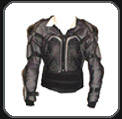Fashion garments,caps,Hats,gloves & western clothing concerns many aspects of vehicle and equipment design as well as operator skill and training that are unique to motorcycle riding.
To address the risks of motorcycling, before and after a fall, motorcyclists use personal protective equipment (PPE, or more commonly "motorcycle gear"). Many developed countries now require certain articles of PPE, and manufacturers and governments recommend its extensive use
Personal protective equipment (PPE) refers to protective clothing, helmets, goggles, or other garment designed to protect the wearer's body or clothing from injury by blunt impacts, electrical hazards, heat, chemicals, and infection, for job-related occupational safety and health purposes, and in sports, martial arts, combat, etc. body armor is combat-specialized protective gear. In British legislation the term PPE does not cover items such as armour.
PPE can also be used to protect the working environment from pesticide application, pollution or infection from the worker (for example in a microchip factory). The protection may be important in both ways, as with the use of disposable gloves by surgeons and dentists.
The terms "protective gear" and "protective clothing" are in many cases interchangeable; "protective clothing" is applied to traditional categories of clothing, and "gear" is a more general term and preferably means uniquely protective categories, such as pads, guards, shields, masks, etc.
Common protective materials include Nomex and Kevlar.
Functions of personal protective equipment
- Improved Visibility — Although for decades the popular image of the motorcycle rider has been of someone clad head-to-toe in black leather, in the light of the Hurt Report findings, and the day-to-day experiences of motorcyclists themselves, many riders choose higher-visibility gear. Bright colors and retro reflective strips are common on quality equipment.
- Abrasion Resistance — Thick, tough leather provides the most abrasion resistance in a crash, but fabrics such as Cordura, Kevlar and ballistic nylon provide significant protection too. In addition, fabrics are generally cheaper, easier to maintain, waterproof, and more comfortable in hot weather. Thick leather, which affords the most abrasion resistance, can be uncomfortable in temperatures exceeding 85 °F (29 °C) and above 100 °F (38 °C) may cause heat stress & loss of control with insufficient fluid replacement. Some PPE may be constructed of fabrics made into a 'mesh' that provides cooling and a stable surface for the attachment of padding.
- Padding — Quality jackets and pants provide significant extra padding in the vulnerable joint regions described above. This can take the form of simple foam padding, or dual-density foam that stiffens when compressed, sometimes with plastic or carbon fiber outer-shells that distribute the impact across the pad. Integrated pieces can be found in some jackets.
- Weather Protection — One important aspect of PPE not mentioned above is protection from the elements. Extreme weather can make a long ride unbearable or dangerous. PPE provides protection from wind, rain and cold.




















